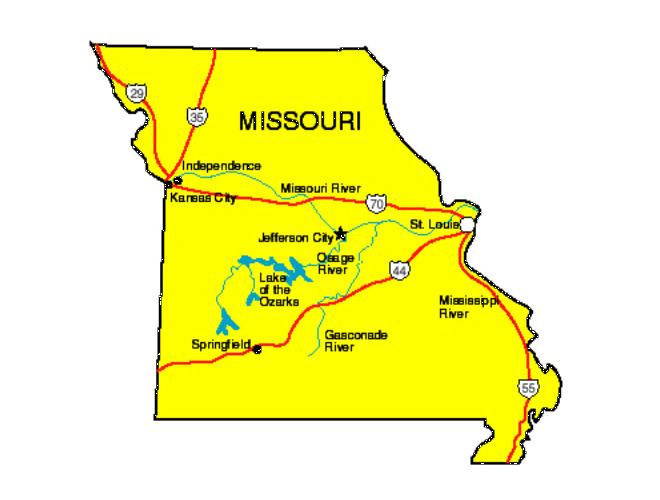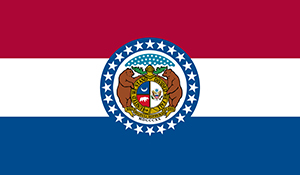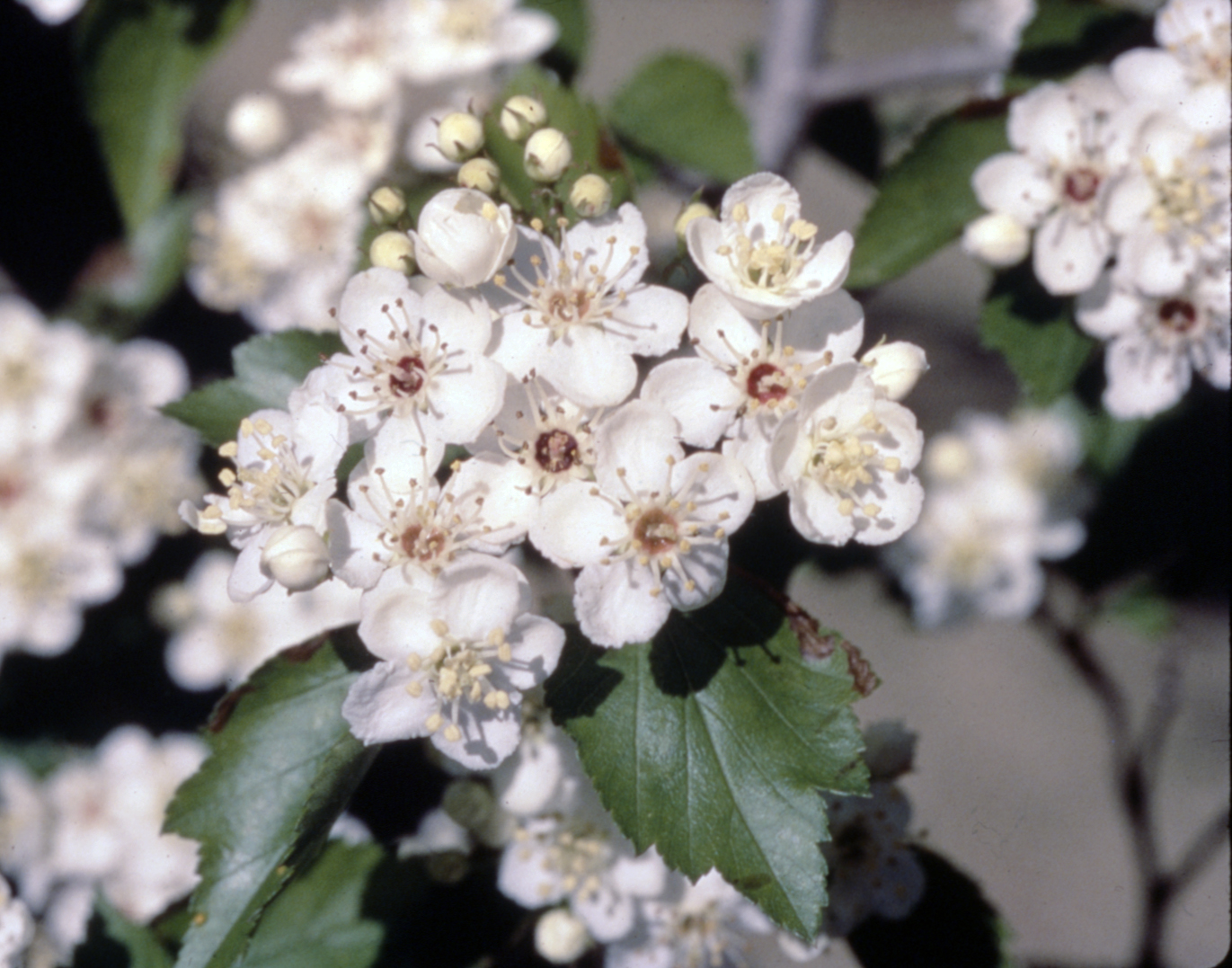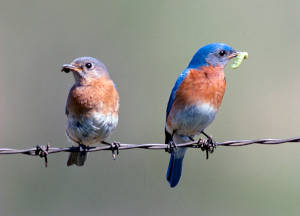Categories
Other Pages
- Age on other Planets
- Aliens
- American Flag
- Annuals
- Avoiding Scams
- Awareness Ribbons
- Baileys Liqueur
- Bananas
- Banana Tree, Grand Nain
- Banana Tree, Ice Cream
- Banana Tree, Zebrina Rojo
- Beekeeping
- Bleach
- Boogaloo
- Bookmarks
- Bullying
- Cats
- Chillicothe Businesses
- Christmas Tree
- Ciroc Vodka
- Coffee Pods
- Color Codes Chart
- Consumer Resources
- Consumer Resources - Elders
- Credit Score Checkers
- Credit Scores
- Death Checklist
- Disaronno Amaretto
- Donation
- Drug Test
- Eye Teasers
- Fonts
- Foods To Regrow
- Friend
- Funny Things
- Fun Stuff
- Giving
- Growing Blueberries
- Halloween
- Halloween Treats
- Hello!!
- Home Bar
- House Plants
- Hunger Facts
- Interesting Facts
- Kinds of Tea
- Lucky Bamboo
- Macaroni!!
- Missouri
- Missouri Prisons
- National Foundations
- Never Forget
- New Page Soon
- One Little Rose
- Orchid Growing
- Orchid Sources
- PayPal.Me
- Perennials
- Phobias A-Z
- Plant Care
- Plant Zone Map
- Propagating Plants
- Ragtime Music
- Recipes I like
- Roses
- Sadie & Beethoven
- Scam Calls
- Smile
- Speed Test
- Spices You Need
- Spices I Have
- State Trees
- Superstitions
- Symbols
- Tequila Rose
- The Ten Commandments
- Top Alcohol
- Top Animated Movies
- Top Comedy Movies
- Top Expensive Movies
- Toyota Yaris 2008
- Toyota Yaris 2012
- Tree, Calamondin Orange
- Tree, Meyer Lemon
- Tree, Persian Lime
- US Bill of Rights
- US Constitution
- US Declaration of Independence
- UV Vodka
- Weight on other Planets
- Wine Clubs
- Wines
- Wines - Missouri
Needed to read PDF's
Missouri
(MO)

State Facts
- State capital: Jefferson City
- Original state capital: St. Charles
- Admission to the Union: August 10, 1821 (24th state)
- Area: 68,727 square miles (18th in U.S.)
- Number of Counties: 114
- Time Zone: Central Time
- Most populated cities
- Kansas City: 486,404
- St. Louis: 308,174
- Springfield: 167,051
- Independence: 117,084
- Columbia: 121,230
- Center of national population: Hartville, Mo.
- Highest point: Taum Sauk Mountain (1,772 ft)
- Lowest point: St. Francois River (230 ft)
- Area Codes: 314, 417, 557, 573, 636, 660, 816, 975
The borders Iowa to the north, Illinois, Kentucky and Tennessee to the east, Arkansas to the south and Oklahoma, Kansas, and Nebraska to the west.
Missouri by the Mile
- 33,811 miles of state highways (7th nationally in state highway miles)
- Interstate highways – 1,385 miles (5th most nationally)
- U.S. routes – 3,412 miles
- State routes – 8,261 miles
- Lettered routes – 18,998 miles
- Other (outer roads, business routes, etc.) – 1,755 miles
- Major routes – 5,555 miles that carry approximately 77% of traffic
- Minor routes – 18,114 miles that carry approximately 22% of traffic
- Low-volume routes - 10,142 miles that carry approximately 1% of traffic
Other Forms of Transportation
- 120 public-use airports, including 36 that are business-capable
- 5,300 miles of railroads
- Kansas City and St. Louis are the 2nd and 6th largest freight rail hubs in the U.S.
- 4 Amtrak routes with 13 station stops
- 1,050 miles of navigable rivers – ranks 10th nationally
- 19 river ports including St. Louis – the 3rd largest U.S. inland port
- 1 tri-state port
- Trucks, planes, barges and trains in Missouri move 985 million tons each year valued at more than $1.1 trillion
- 32.2 million transit trips annually
- More than 600 miles of shared-use paths for bicyclists and pedestrians
State Flag

On March 22, 1913, nearly 100 years after achieving statehood, Missouri adopted an official flag. The flag was designed by Mrs. Marie Elizabeth Watkins Oliver, wife of former State Senator Robert B. Oliver. The Olivers’ nephew, Sen. Arthur L. Oliver, introduced a bill to the General Assembly in 1909, 1911 and again in 1913 when it was finally adopted. The flag consists of three horizontal stripes of red, white and blue: the three colors of the United States flag. The Missouri coat of arms is centered over the stripes and encircled by a blue band containing 24 stars, which denotes that Missouri was the 24th state to join the Union.
Marie Oliver’s original flag was donated to the Missouri Secretary of State (SOS) in 1961 by the Olivers’ son Allen. The flag is silk with a hand-painted coat of arms. It was displayed in the Capitol Building from 1961 to 1980 when it was removed because of its fragile condition. Eight years later, SOS Roy Blunt, with the help of a penny drive by Missouri’s elementary school students, sent the flag to a conservator for restoration and conservation. Today, the SOS is proud to display the original state flag permanently in its lobby in Jefferson City.
State Seal

Great Seal of the State of Missouri
On January 11, 1822, the General Assembly adopted an act providing for the Great Seal of the State of Missouri. The legislation specifically described the symbols on the seal and their placement. The Secretary of State serves as the official keeper of the Great Seal. A few variations have appeared over the last 200 years (see the photo gallery below), but the whole has remained the same.
The Great Seal was designed by Judge Robert William Wells. The center of the seal is composed of two parts. On the right is the United States coat of arms containing the bald eagle. In its claws are arrows and olive branches, signifying that the power of war and peace lies with the U.S. federal government. On the left side are a grizzly bear and a silver crescent moon from the Missouri coat of arms. The crescent symbolizes Missouri at the time of the state seal’s creation: a state of small population and wealth that would increase like a waxing crescent moon. It also symbolizes the “second son,” meaning Missouri was the second state formed out of the Louisiana Territory.
The coat of arms is encircled by a belt inscribed with the phrase, “united we stand divided we fall,” implying that not only should Missourians work together, but Missourians should work with all other states and the federal government. Two grizzly bears on either side of the coat of arms symbolize the state’s strength and its citizens’ bravery. The bears stand atop a scroll bearing the state motto, “salus populi suprema lex esto.” Below this scroll are the Roman numerals for 1820, the year Missouri began its functions as a state.
The helmet above the coat of arms represents state sovereignty, and the large star atop the helmet surrounded by 23 smaller stars signifies Missouri’s status as the 24th state. The cloud around the large star indicates the difficulties Missouri went through to become a state. The whole seal is enclosed by a scroll bearing the words, “The Great Seal of the State of Missouri.”
State Motto
Salus Populi Suprema Lex Esto
Missouri’s state motto emerged in 1822 when it was approved as part of the Great Seal of the State of Missouri. The Latin phrase salus populi suprema lex esto can be traced back to Cicero’s De Legibus. There has been much debate over the years regarding the correct and intended English translation of this Latin motto.
Great Seal designer William Wells proposed the motto, translating it in 1847 as “Let the good of the people be the supreme law.” He went on to explain, “This motto being that upon which the supporters stand, was intended to represent the foundation of the government of the State. That foundation is ‘the good of the people’ or the public good.” The current 2019-2020 Official Manual of the State of Missouri, printed by the Great Seal’s official keeper, the Missouri Secretary of State, translates it as “The welfare of the people shall be the supreme law.”
State Tree

Flowering Dogwood
(Cornus florida L.)
In 1955, the flowering dogwood (Cornus florida L.) became Missouri’s official arboreal emblem, also known as the state tree. The tree is small, rarely growing over 40 feet in height or 18 inches in trunk diameter. The dogwood sprouts tiny greenish-yellow flowers in clusters, with each flower surrounded by four large, white (or sometimes pink) bracts (colorful features that provide protection for the flowers and resemble petals). The paired oval leaves are olive green above and covered with silvery hairs underneath. In the fall, the upper part of the leaves turns scarlet or orange. Bright red fruits seasonally grow on the tree. Dogwoods are found in southern and central Missouri, and they are slowly making their way farther north.
State Flower

Hawthorn
(Crataegus)
In 1923, Gov. Arthur M. Hyde signed a bill naming the hawthorn blossom the official Missouri state floral emblem. There are approximately 75 separate species of hawthorn plants found in the state. All of these varieties have white blossoms with five petals that are similar in appearance to apple blossoms. In the fall, the trees sprout small clusters of red fruit, which is where the hawthorn gets its nickname “red haw.” Hawthorns are found statewide.
State Bird

Eastern Bluebird
(Sailia sialis)
The Eastern bluebird has been the official state bird of Missouri since 1927. The bluebird is considered a symbol of happiness. This songbird is smaller than a robin and gets its name from the male’s bright blue feathers on its wings, tail, back and head. The bluebird typically visits Missouri from the early spring to the late fall; some areas of the state see bluebirds year round, especially in the south where they are considered permanent residents. The birds breed in the spring and summer, and many Missourians attract the birds to their property by installing bluebird houses. The bird’s red, white and blue coloring makes it a natural choice for an American symbol.
Popular Iconic Missouri Foods
Missouri is famous for the following foods:
- St. Louis-Style Pizza
- Toasted Ravioli
- Gooey Butter Cake
- Slinger
- St. Paul Sandwich
- Pork Steaks
- Red Hot Riplets
- St. Louis-Style Ribs
Famous People Born In Missouri
Nobel Prize Winners
- T.S. Eliot (Literature, 1948)
- Steven Chu (Physics, 1997)
- Jack Kilby (Physics, 2000)
- Roger D. Kornberg (Chemistry, 2006)
- Michael Rosbash (Physiology or Medicine, 2017)
United States Presidents
- Ulysses S. Grant (18h President)(1869 to 1877): Ulysses S. Grant (April 27, 1822 – July 23, 1885). Known primarily for his roles as a Civil War general and 18th President of the United States, he was far more than an acclaimed solider or politician. Grant’s role in Reconstruction and the establishment of civil rights policies is still relevant today. He was a son, husband, father, and friend whose often-contradictory actions were shaped by his background and sense of responsibility.
- Harry S. Truman (33rd President)(1945 to 1953): Harry S. Truman (May 8, 1884 – December 26, 1972) was the 33rd president of the United States, serving from 1945 to 1953. Serving as the 34th vice president in 1945, he assumed the presidency upon the death of Franklin D. Roosevelt. Truman implemented the Marshall Plan in the Aftermath of World War II to rebuild the economy of Western Europe, and established both the Truman Doctrine and NATO to contain the expansion of Soviet communism. A member of the Democratic Party, he proposed numerous New Deal coalition liberal domestic reforms, but few were enacted by the conservative coalition that dominated the United States Congress.
Pro Football Hall Of Fame Members
- Jim Finks (Administrator. Inducted in 1955)
- Cal Hubbard (Tackle. Inducted in 1963)
- Jimmy Conzelman (Quarterback, Coach. Inducted in 1964)
- Kellen Winslow (Tight End. Inducted in 1995)
- Roger Wehrli (Cornerback. Inducted in 2007)
Baseball Hall Of Fame Players
- Carl Hubbell (Pitcher. Inducted in 1947)
- Zack Wheat (Left Fielder. Inducted in 1959)
- Pud Galvin (Pitcher. Inducted in 1965)
- Jake Beckley (First Baseman. Inducted in 1971)
- Yogi Berra (Catcher. Inducted in 1972)
Naismith Memorial Basketball Hall Of Fame Players
- Ed Macauley (Center-Forward. Inducted in 1960)
- Forrest DeBernardi (Center. Inducted in 1961)
- Bob Kurland (Center. Inducted in 1961)
- Bill Bradley (Guard-Forward. Inducted in 1983)
- Jo Jo White (Guard. Inducted in 2015)
- Cotton Fitzsimmons (Coach. Inducted in 2021)
- Gene Bess (Coach. Inducted in 2023)
Hockey Hall Of Fame Members
- Pat LaFontaine (Center. Inducted in 2003)
Famous Actors And Actresses
- Wallace Beery
- John Goodman
- Geraldine Page
- Ginger Rogers
- Jane Wyman
Famous Singers
- Helen Cornelius
- Sheryl Crow
- Eminem
Other Famous Missourians
Josephine Baker (entertainer) (Born 1906; died 1975) - Born in the Mill Creek Bottom area of St. Louis, Baker’s childhood, like many other black Americans who lived at that time, dealt with poverty and white America’s racist attitudes. In France, where racism was not as common, Josephine Baker became an entertainer. Her career as a dancer, singer, and actress lasted 50 years. Baker fought racism most of her life through her role as a civil rights activist in the 1950’s and 1960’s. Baker was known for refusing to entertain segregated audiences, and worked to desegregate Las Vegas nightclubs.
Thomas Hart Benton (artist) (Born 1889; died 1975) - Born in Neosho, Benton was a famous artist. Two of his best-known works appear in wall painting form at the State Capitol in Jefferson City and the Truman Library in Independence. The Capitol painting shows scenes of Missouri history; the Truman Library painting shows Independence, Missouri’s role in opening the West.
Thomas Hart Benton (senator) (Born 1782; died 1858) - Benton has been called the “most distinguished statesman accredited to Missouri.” He was a fighter for the common man, which earned him the nickname “Old Bullion.” Benton was one of Missouri’s first senators in 1820. He served five terms or thirty years. Benton was involved in important national issues including Missouri’s statehood through the slavery crisis of the 1850’s. Benton became a leader during those early statehood years, and was a supporter of Jacksonian Democracy.
George Caleb Bingham (artist) (Born 1811; died 1879) - Many believe Bingham was the greatest American-born artist; Bingham is well known for his portraits and his paintings of life on the Missouri frontier. He held a variety of public service positions including Missouri State Representative, state treasurer and the chief administrative officer of the Missouri military.
Susan Elizabeth Blow (educator) (Born 1843; died 1916) - Born in St. Louis, she is sometimes called the founder of public kindergarten in America. Through her efforts, the first public kindergarten began in September 1873 at the Des Peres School in St. Louis. She also trained teachers and published books on the subject.
Daniel Boone (adventurer) (Born 1734; died 1820) - Boone was a pioneer, scout, Indian fighter and, in later years, a Missourian. He came to Missouri from Kentucky in 1799 and served as a local judge. From his home at Defiance, which he built with his son, Nathan, he explored much of the state. He died in his Defiance home.
Omar N. Bradley (military leader) (Born 1893; died 1981) - General Bradley was born in Clark, Missouri. He commanded the largest American force ever united under one man’s leadership during World War II. Bradley became the first chairman of the Joint Chiefs of Staff (in charge of all military), after the war. He served as a five star general; he served in the military longer than any other soldier in U.S. history, 69 years.
George Washington Carver (scientist) (Born 1864; died 1943) - Carver was born a slave near Diamond; he overcame many problems to become one of America’s greatest scientists. He is best remembered for his research on better soil for farmers. A national monument in southwest Missouri preserves the area where Carver was born and spent his childhood.
Christopher (Kit) Carson (adventurer) (Born 1809; died 1868) - Born in Kentucky, Kit Carson moved to the Boonslick district of Missouri in 1811, an area he called home for nearly half his life. He led an adventurous life as a Santa Fe Trail teamster, trapper, scout, and Indian fighter. Carson served as a guide for Lt. John Charles Fremont’s western expeditions and helped in the California conquest in 1846 during the Mexican War. In 1853, Carson was appointed as Indian agent in charge of the Ute nation.
William Clark (explorer) (Born 1770; died 1838) - As part of the famous duo, Lewis and Clark, Clark is best known for his part in the exciting expedition he and Meriwether Lewis led westward to the Pacific. Clark returned with information about the western region of the United States. In 1806, Clark began a long and successful Missouri career when he was appointed the principal U.S. Indian agent for tribes in the territory. From 1813 to 1820, he served as governor of Missouri. In 1822, he moved to St. Louis as U.S. Superintendent of Indian Affairs, a post he held until his death.
Samuel Clemens (author) (Born 1835; died 1910) - Growing up in Hannibal, Clemens watched riverboats on the Mississippi. From riverboat language he took a name- Mark Twain- that would become famous worldwide for his books involving characters like Huckleberry Finn and Tom Sawyer. One of America’s greatest writers, Mark Twain is remembered today at his boyhood home in Hannibal and at his nearby birthplace in Florida, Missouri.
Walt Disney (cartoonist) (Born 1901; died 1966) - Disney, the well-known cartoonist and creator of animated films, grew up in Marceline and Kansas City. Disney created the first animated cartoon with sound, “Steamboat Willie,” which introduced the world to Mickey Mouse. Disney’s first animated feature film was “Snow White and the Seven Dwarfs.”
St. Rose Philippine Duchesne (missionary) (Born 1769; died 1852) - She came to St. Louis from her home in France at age 48 to work as a missionary to the Indians. In 1818, she started a school at St. Charles, which became the first free school west of the Mississippi. At the time of her death, she had started schools and seminaries for white, black and Indian children in Missouri, Kansas and Louisiana. She was made a Saint on July 3, 1988.
Eugene Field (children’s author) (Born 1850; died 1895) - Field, born in St. Louis, created some of the world’s best-loved children’s poems. He wrote Little Boy Blue and Wynken, Blyken, and Nod. Know as “The Children’s Poet,” Field is remembered by hundreds of schoolhouses across the country, are named in his honor. He also was a newspaper writer.
Phoebe Apperson Hearst (volunteer, children’s activist) (Born 1842; died 1919) - Born in Franklin County and married in Steelville, she moved to San Francisco with her husband George Hearst, also a Missourian, who amassed a fortune in the mining fields of Nevada. Although Mrs. Hearst supported the arts, she is best remembered for her early support of kindergartens and as a co-founder of the National Congress of Mothers, know today as the PTA. She is the mother of publisher William Randolph Hearst.
Edwin Powell Hubble (astronomer) (Born 1889; died 1953) - Hubble was born in Marshfield and became one of the world’s leading astronomers. In 1925, he presented the first system for classifying galaxies. By 1929, Hubble discovered that galaxies always expand. This fact became known as the “Hubble Law.” In 1990, the Hubble Space Telescope was named in his honor.
James Langston Hughes (musician) (Born 1902; died 1967) - Hughes was born in Joplin, Missouri. Hughes was an author, anthologist, librettist, songwriter, columnist, founder of theaters and jazz founding father. His African heritage inspired his work. Hughes received the Anisfeld-Wolf Award in 1953 for the year’s best book on race relations, the Spingarn Medal in 1960 and was elected to the National Institution of Arts and Letters in 1961.
Jesse James (outlaw) (Born 1847; died 1882) - James was a famous outlaw in Missouri and the western Border States. He was born at Kearney. His childhood home and gravesite are there. The best-known site associated with Missouri’s most famous citizen is his St. Joseph home where he was shot and killed. The small frame home is on the grounds of Patee House Museum in St. Joseph.
Scott Joplin (musician) (Born 1868; died 1917) - Joplin was born in Texas, but spent most of his life in Missouri. He was a piano player who helped develop a style of music called “ragtime.” Joplin’s father was a former slave. Joplin wrote such popular songs as “The Maple Leaf Rag” and “The Entertainer.”
Emmett Kelly (clown) (Born 1898; died 1979) - Kelly was “America’s most famous clown.” He was best known for his hobo character “Weary Willie,” invented during the Great Depression. Born in Cabool, Kelly accidentally became an entertainer after moving to Kansas City in 1917 to be a cartoonist. When he did not succeed as a cartoonist, Kelly toured with circuses in the 1920’s and 1930’s. Kelly joined the Ringling Brothers- Barnum and Bailey Circus in 1942, becoming a star attraction over his 15-year career with the circus.
James Cash (J.C.) Penney (businessman) (Born 1875; died 1971) - Penney founded the J.C. Penney Company. Penney was born in Caldwell County. Penny started as a dry goods clerk and bought stock in a store that he named the Golden Rule Store, from his employer. He bought more stores in 1904, which led to a nationwide chain of stores. In 1912 Penney named the stores J.C. Penney Stores.
John J. Pershing (military leader) (Born 1860; died 1948) - Pershing, a six star general, born near Laclede, is the only American to be named General of the Armies. His career included service in the Spanish American War and in the fight against Mexican bandit Pancho Villa. In World War I, he commanded the American Expeditionary Force in Europe.
Joseph Pulitzer (newspaperman) (Born 1847; died 1911) - Pulitzer made his way from his birthplace in Mako, Hungary to St. Louis in 1865, a city he called home for almost 20 years. In 1869 he was elected to the Missouri Legislature. In 1878 Pulitzer bought the newspaper the St. Louis Dispatch and merged it with the St. Louis Post and created St. Louis’s leading newspaper known today as the St. Louis Post-Dispatch. He covered shocking stories to sell newspapers this approach was nicknamed “yellow journalism.” He also bought the New York World and became know as a publisher around the world. The Pulitzer Prize Award is named after him. This award is an important award for journalists.
Stuart Symington (public official) (Born 1901; died 1988) - Symington was born in Massachusetts, however he was best known for being a U.S. Senator for Missouri from 1953 to 1977. During the Truman presidency, Symington was Assistant Secretary of War for Air; he also became the nation’s first Secretary of the Air Force in 1947. Symington ran for president twice but did not win.
Laura Ingalls Wilder (author) (Born 1867; died 1957) - Wilder was famous for writing books such as: Little House on the Prairie and seven other “Little House” books. Wilder was born in Wisconsin, but she was living in Mansfield when she began her writing career in 1932. All her books were written at Rocky Ridge Farm in Mansfield, where she lived until her death.
People Facts
| Population | |
| Population estimates, July 1, 2024, (V2024) | 6,245,466 |
| Population estimates, July 1, 2023, (V2023) | 6,196,156 |
| Population estimates base, April 1, 2020, (V2024) | 6,154,854 |
| Population estimates base, April 1, 2020, (V2023) | 6,154,889 |
| Population, percent change - April 1, 2020 (estimates base) to July 1, 2024, (V2024) | 1.5% |
| Population, percent change - April 1, 2020 (estimates base) to July 1, 2023, (V2023) | 0.7% |
| Population, Census, April 1, 2020 | 6,154,913 |
| Population, Census, April 1, 2010 | 5,988,927 |
| Age and Sex | |
| Persons under 5 years, percent | 5.7% |
| Persons under 18 years, percent | 22.2% |
| Persons 65 years and over, percent | 18.3% |
| Female persons, percent | 50.7% |
| Race and Hispanic Origin | |
| White alone, percent | 82.4% |
| Black alone, percent | 11.7% |
| American Indian and Alaska Native alone, percent | 0.6% |
| Asian alone, percent | 2.3% |
| Native Hawaiian and Other Pacific Islander alone, percent | 0.2% |
| Two or More Races, percent | 2.7% |
| Hispanic or Latino, percent | 5.3% |
| White alone, not Hispanic or Latino, percent | 77.9% |
| Population Characteristics | ||||
| Veterans, 2019-2023 | 354,505 | |||
| Foreign-born persons, percent, 2019-2023 | 4.4% | |||
| Housing | |
| Housing Units, July 1, 2023, (V2023) | 2,844,346 |
| Owner-occupied housing unit rate, 2019-2023 | 67.9% |
| Median value of owner-occupied housing units, 2019-2023 | $215,600 |
| Median selected monthly owner costs - with a mortgage, 2019-2023 | $1,478 |
| Median selected monthly owner costs -without a mortage, 2019-2023 | $528 |
| Median gross rent, 2019-2023 | $996 |
| Building Permits, 2023 | 16,781 |
| Families & Living Arrangements | ||||
| Households, 2019-2023 | 2,484,834 | |||
| Persons per household, 2019-2023 | 2.42 | |||
| Living in the same house 1 year ago, percent of persons age 1 year+ , 2019-2023 | 86.9% | |||
| Language other than English spoken at home, percent of persons age 5 years+, 2019-2023 | 6.6% | |||
| Computer and Internet Use | |
| Households with a computer, percent, 2019-2023 | 94.0% |
| Households with a broadband Internet subscription, percent, 2019-2023 | 88.1% |
| Education | ||||
| High school graduate or higher, percent of persons age 25 years+, 2019-2023 | 91.6% | |||
| Bachelor's degree or higher, percent of persons age 25 years+, 2019-2023 | 31.9% | |||
| Health | |
| With a disability, under age 65 years, percent, 2019-2023 | 10.5% |
| Persons without health insurance, under age 65 years, percent | 9.1% |
| Economy | ||||
| In civilian labor force, total, percent of population age 16 years+, 2019-2023 | 62.7% | |||
| In civilian labor force, female, percent of population age 16 years+, 2019-2023 | 59.1% | |||
| Total accommodation and food services sales, 2022 ($1,000) | 18,523,356 | |||
| Total health care and social assistance receipts/revenue, 2022 ($1,000) | 59,680,054 | |||
| Total transportation and warehousing receipts/revenue, 2022 ($1,000) | 22,731,448 | |||
| Total retail sales, 2022 ($1,000) | 129,387,984 | |||
| Total retail sales per capita, 2022 | $20,946 | |||
| Transportation | |
| Mean travel time to work (minutes), workers age 16 years+, 2019-2023 | 23.7 |
| Income & Poverty | |
| Median households income (in 2023 dollars), 2019-2023 | $68,920 |
| Per capita income in past 12 months (in 2023 dollars), 2019-2023 | $38,497 |
| Persons in poverty, percent | 12.0% |
Find me on Social Media
 |
Don't forget to bookmark me to see updates.. Copyright © 2000 - 2025 - K. Kerr Most recent revision November 19, 2025 07:05:33 AM
|











